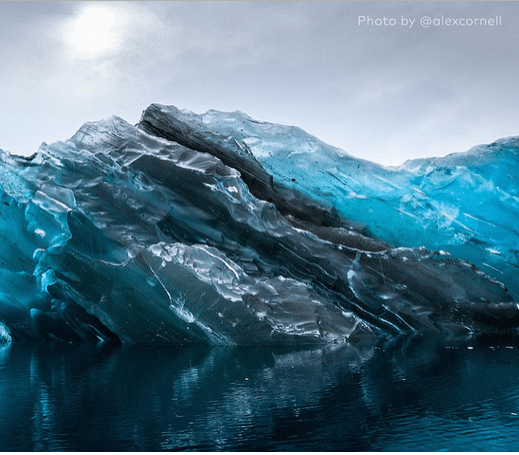
Reposted from One Green Planet by Kate Good
When photographer Alex Cornell shared an image of an iceberg in Antarctica that had flipped over, exposing its smooth, translucent underside, the world was captivated. Compared to the usual (arguably equally awe-inspiring) images that we see of icebergs, the enormous ice structure in this image looked as if it were made entirely of pure deep blue glass. While many heralded this photo for its beauty, what caused this incredible, ancient formation to turn over was largely overlooked.
Icebergs are formed when sections of freshwater ice break off from larger ice shelves or glaciers. Although these structures are massive, they float because salt water has a higher density. Only around 10 percent of the iceberg can be seen above water, hence the popular phrase, “Just the tip of the iceberg.” So, if there is around 90 percent of the entire iceberg’s structure submerged underwater, the likelihood that they will flip over is extremely rare.





